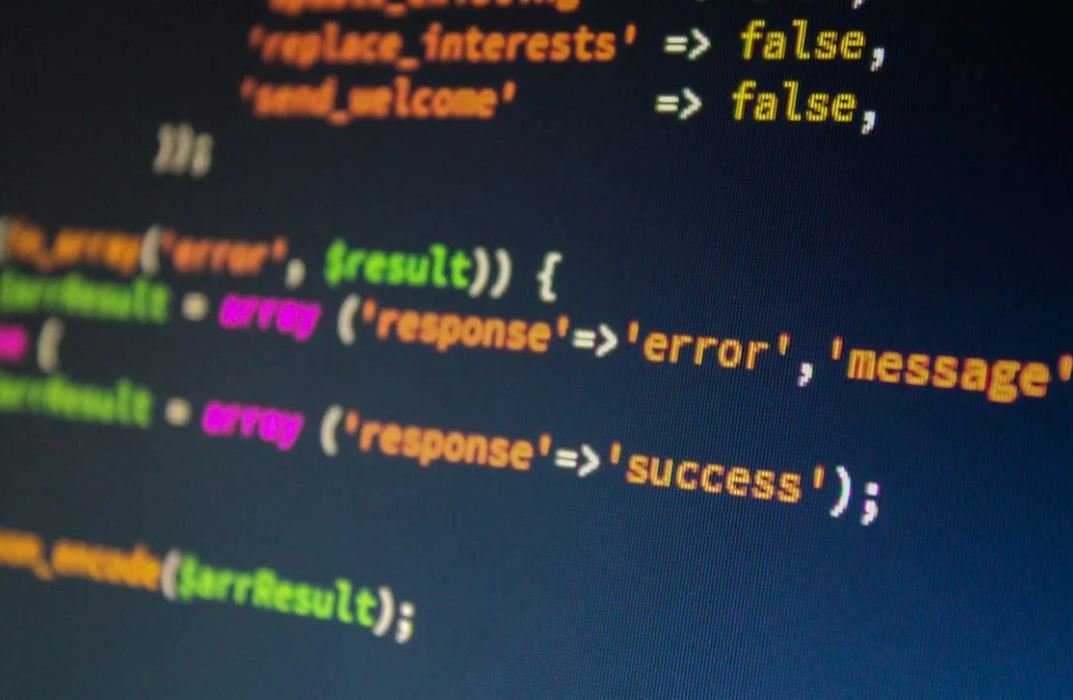Apps Down
In today’s digital age, smartphones have become an integral part of our lives. We rely on them for communication, entertainment, and even productivity. However, as convenient as they are, there can be instances where apps on our smartphones may not function properly. This article aims to provide insight into the reasons behind app malfunctions and provide tips to troubleshoot and resolve these issues.
Key Takeaways
- Apps may experience malfunctions due to various reasons.
- Clearing cache and restarting the device can often resolve app-related problems.
- Updating apps regularly helps to ensure smooth performance.
- Checking for software updates is essential for app compatibility.
**One common cause of app malfunctions is insufficient storage space on your device.** Apps require a certain amount of storage to function properly, and if the available space is limited, the app may not work as intended. To address this issue, consider deleting unnecessary files or apps to free up space on your device. Additionally, moving media files to an external storage device or utilizing cloud storage can help alleviate storage constraints.
**Another reason for app malfunctions is outdated app versions.** Developers continuously release updates to improve app functionality, fix bugs, and enhance performance. It is crucial to regularly check for updates and install them promptly to ensure your apps are compatible with the latest operating systems and remain bug-free.
Clearing Cache and Restarting Your Device
**Clearing the app cache can resolve various app-related issues.** Over time, the temporary data stored by apps can accumulate and impact their performance. Clearing the app cache not only frees up storage space but also removes any corrupt or outdated files that may be causing the malfunction. To clear the cache on an Android device, navigate to the “Settings” menu, select “Apps,” then choose the specific app and tap on “Clear Cache.” On iOS, uninstalling and reinstalling the app accomplishes the same result.
**Restarting your device can often resolve app malfunctions.** Sometimes a simple restart can fix minor software glitches that may be affecting app performance. By restarting your device, you essentially give it a fresh start, clearing any temporary issues that may be causing the apps to malfunction.
Updating Apps and Software
**It is essential to update your apps regularly to ensure their smooth performance.** Developers release updates to fix bugs, improve security, and enhance user experience. By updating your apps, you ensure that you are benefiting from these improvements and minimizing the risk of encountering app malfunctions.
**Checking for software updates is crucial for app compatibility.** Operating system updates often include changes that affect how apps function. By keeping your device’s software up-to-date, you increase the chances of your apps running smoothly without any compatibility issues. Regularly checking for software updates in your device settings and installing them promptly can contribute to a better overall app experience.
App Malfunction: Table of Common Causes and Resolutions
| Common Causes | Resolutions |
|---|---|
| Insufficient storage space | Delete unnecessary files or apps, move media files to external storage |
| Outdated app versions | Regularly check for updates and install them promptly |
| Software compatibility issues | Update the device’s software to the latest version |
**In addition to the above-mentioned steps, it is worth considering a factory reset as a last resort.** If all else fails and the apps continue to malfunction, a factory reset can serve as a comprehensive solution. However, be aware that a factory reset will erase all data and settings on your device, so it is crucial to create a backup of important files before proceeding.
Don’t Let App Malfunctions Hold You Back
In conclusion, app malfunctions can be frustrating, but with the right knowledge and troubleshooting steps, you can resolve these issues and get your apps back to optimal performance. By keeping your device updated and utilizing the tips provided, you can ensure a seamless app experience.

Common Misconceptions
Paragraph 1
One common misconception people have about apps is that they are only for entertainment purposes. While it’s true that many apps are designed for entertainment, such as games and social media platforms, there are numerous apps available that serve practical purposes.
- Apps can be used for productivity and organization, such as task management or note-taking apps
- Apps can be educational, providing users with learning materials and interactive courses
- Apps can help in financial management, enabling users to track expenses and budget effectively
Paragraph 2
Another misconception is that all apps are expensive to use or require a significant financial investment. While some apps may have a price tag, there are many free apps available on various app stores that offer valuable features and services.
- Freemium apps provide a basic version for free, with the option to upgrade to a paid version for additional features
- Many developers offer free versions of their apps as a way to attract users and then monetize through ads or in-app purchases
- Open-source apps are developed by communities and are often available for free
Paragraph 3
Some people believe that apps are inherently insecure and can easily compromise their privacy and security. While it’s true that there have been cases of security vulnerabilities in apps, developers take numerous measures to enhance security and protect user data.
- App stores have strict guidelines to ensure apps meet certain security standards before they are allowed to be published
- App permissions allow users to control what data the app can access on their device
- Developers regularly release updates to address security flaws and vulnerabilities
Paragraph 4
There is a misconception that apps are only for smartphones and tablets. While apps are commonly associated with these devices, they can also be developed for other platforms such as desktop computers, smart TVs, and even wearable devices.
- Desktop apps offer similar features and functionalities as mobile apps, tailored for a different user experience
- Smart TV apps allow users to access streaming services and other entertainment platforms on their television
- Wearable apps enhance the functionality of wearable devices, such as fitness tracking or health monitoring
Paragraph 5
Finally, some people believe that app development is a complex and time-consuming process that requires advanced technical skills. While developing complex apps can be challenging, there are tools and platforms available that make it easier for individuals with limited technical knowledge to create their own apps.
- App builders and app development platforms offer drag-and-drop interfaces and pre-built templates for creating apps without coding
- Online resources and tutorials provide step-by-step guidance for app development
- App development courses and workshops are available to help beginners learn the necessary skills

Number of Apps Downloaded Worldwide
In recent years, the number of mobile applications downloaded worldwide has been rapidly increasing. The table below illustrates the number of app downloads from 2015 to 2020.
| Year | Number of App Downloads (in billions) |
|---|---|
| 2015 | 111 |
| 2016 | 149 |
| 2017 | 197 |
| 2018 | 254 |
| 2019 | 365 |
| 2020 | 423 |
Top Categories for App Downloads
The popularity of different app categories can vary greatly. The table below illustrates the top five app categories based on the number of downloads in 2020.
| Category | Percentage of Total Downloads |
|---|---|
| Social Networking | 18% |
| Games | 37% |
| Entertainment | 12% |
| Utilities | 8% |
| Productivity | 6% |
Revenue Generated by Mobile Apps
Mobile apps have become a significant source of revenue. The table below illustrates the global revenue generated by mobile apps from 2017 to 2020.
| Year | Revenue (in billions of USD) |
|---|---|
| 2017 | 90 |
| 2018 | 111 |
| 2019 | 141 |
| 2020 | 189 |
App Downloads by Operating System
When it comes to app downloads, different operating systems play a significant role. The following table illustrates the distribution of app downloads by operating system in 2020.
| Operating System | Percentage of App Downloads |
|---|---|
| Android | 76% |
| iOS | 24% |
Number of Paid Apps vs. Free Apps
The availability of free apps has significantly impacted the app market. The table below shows the proportion of paid and free apps available in app stores.
| App Type | Percentage of Total Apps |
|---|---|
| Paid Apps | 17% |
| Free Apps | 83% |
Percentage of Users Who Uninstall Apps
App uninstallation is a common phenomenon among users. The table below demonstrates the percentage of users who uninstall apps after a certain period of installation.
| Period | Percentage of Users |
|---|---|
| Within 24 hours | 30% |
| Within a week | 42% |
| Within a month | 52% |
| After six months | 69% |
User Ratings for Popular Apps
User ratings play a crucial role in determining app popularity. The table below displays the average user ratings (out of 5) for popular apps in 2020.
| App | Average User Rating (out of 5) |
|---|---|
| 4.2 | |
| 4.4 | |
| 4.5 | |
| Netflix | 4.7 |
| Spotify | 4.6 |
User Demographics for Fitness Apps
Fitness apps have gained immense popularity, serving various demographics. The table below illustrates the distribution of users across different age groups for fitness apps in 2020.
| Age Group | Percentage of Users |
|---|---|
| 18-24 | 25% |
| 25-34 | 35% |
| 35-44 | 20% |
| 45-54 | 12% |
| 55+ | 8% |
App Development Costs
The cost of developing an app can vary depending on various factors. The table below provides an overview of average app development costs in different regions.
| Region | Average Development Cost (in USD) |
|---|---|
| North America | 150,000 |
| Europe | 100,000 |
| Asia | 60,000 |
| Africa | 30,000 |
In conclusion, the article examines various aspects of the mobile app industry, including app downloads, revenue, user behavior, app categories, and development costs. It is evident that the global mobile app market has experienced significant growth along with the increasing popularity of specific app categories. The revenue generated by apps continues to grow, providing a lucrative opportunity for developers. User behavior, such as the percentage of uninstallation and average user ratings, offers insights into user preferences and engagement. Lastly, the cost of app development varies across different regions, which influences the market dynamics and competition. The mobile app industry is dynamic and ever-evolving, presenting both challenges and opportunities for developers and users alike.
Frequently Asked Questions
How do I know if an app is down?
If you are experiencing issues with an app, you can check if it is down by visiting the app’s official website or social media pages. There might also be online communities or forums where users discuss and report app outages. Additionally, you can try accessing the app from multiple devices to see if the problem persists.
What should I do if an app is down?
If an app is down, you can try a few troubleshooting steps. First, ensure that your internet connection is stable. Restarting the app or your device may also help. If the issue continues, you can contact the app’s support team or report the problem through the app store or official website. They can provide further assistance or inform you about any ongoing maintenance.
How long does it usually take for an app to get back up when it’s down?
The duration for an app to get back up can vary depending on the cause of the issue. Some outages may be resolved within a few minutes, while others may take several hours or even days if there are complex technical problems involved. The app’s developers or support team are typically responsible for resolving the outage and will make efforts to restore services as soon as possible.
Can I check if an app is down on Google?
Yes, you can use Google to check if an app is down. Type the app name followed by “outage” or “down” in the search bar. Google may display relevant information from official sources or community forums. Additionally, Google may also show performance graphs or outage reports if they are available for the specific app you are searching.
Why do apps go down?
Apps can go down for various reasons. Some common causes include server issues, network problems, software bugs, or maintenance activities. High user traffic or sudden spikes in usage can also sometimes overload app servers, leading to temporary outages. In rare cases, apps may go down due to cyber-attacks or security breaches.
Is it normal for apps to go down occasionally?
Yes, it is normal for apps to experience occasional downtime. Even the most reliable and popular apps can face technical difficulties that result in temporary outages. App developers strive to provide uninterrupted services, but unforeseen issues can arise. However, they usually work diligently to prioritize uptime and minimize the frequency and duration of app downtimes.
How can I stay updated on app outages?
To stay updated on app outages, you can follow the official social media accounts of the app or its development team. They may post announcements regarding any known issues or expected downtime. Additionally, subscribing to app-related newsletters or joining online communities or forums can provide you with real-time information about app outages and ongoing maintenance activities.
What should I do if an app is constantly experiencing downtime?
If an app is frequently experiencing downtime, it may indicate underlying stability or performance issues. In such cases, you can try contacting the app’s customer support to report the recurring downtime and seek assistance. Providing specific details about your experiences and any error messages received can help them identify and resolve the underlying problems.
Can apps go down simultaneously on all devices?
Yes, apps can go down simultaneously on all devices if the issue is related to server problems or network outages. If the app’s servers are experiencing difficulties or facing an outage, it can affect the app’s functionality on all devices until the issue is resolved. However, individual device-related issues like software conflicts or hardware problems usually do not impact the app’s availability on other devices.
Can I get compensation if I experience downtime with a paid app?
The compensation policy for downtime with a paid app may vary depending on the app store, app developer, or the app’s terms and conditions. Some app stores or developers may offer refunds or compensation for significant and prolonged outages. It is advisable to review the app’s refund or compensation policy, which is often outlined in the app’s terms of service or on the app store platform.





